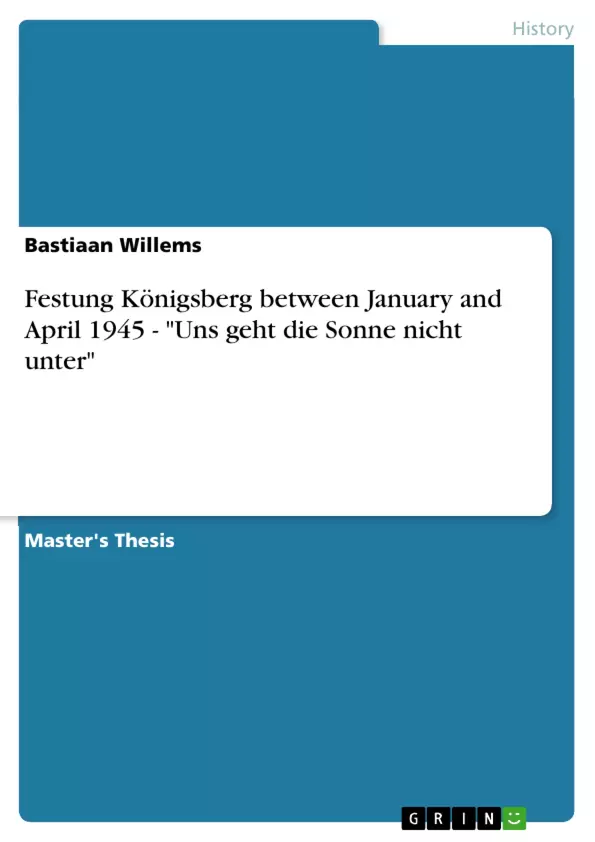This dissertation strives to analyse the different causes as to why the city of Königsberg held out for over two months before it was finally captured by the Red Army, in order to answer the question what determined the successfulness of the city as a Festung. The conclusion will expand the analyses to the Festung-strategy as a whole and to other fortress cities in Eastern Germany.
Inhaltsverzeichnis (Table of Contents)
- Introduction
- Chapter 1: Königsberg as ‘Festung’
- What effect did the strategy of designating Fortress cities have on Königsberg?
- Chapter 2: No safety in numbers
- What were the tactics that proved decisive during the battle of Königsberg?
- Chapter 3: Politics and Patriotism on the East Prussian battlefield
- How did the mindset of the belligerents influence the battle of Königsberg?
- Conclusion
Zielsetzung und Themenschwerpunkte (Objectives and Key Themes)
This dissertation aims to analyze the reasons behind the city of Königsberg's prolonged defense against the Red Army for over two months, ultimately seeking to understand the factors that contributed to its success as a Festung. The conclusions will extend the analysis to the Festung-strategy as a whole and to other fortress cities in Eastern Germany. Key themes of this work include:- The effectiveness of the Festung strategy in Königsberg
- The political and military factors influencing the defense of Königsberg
- The role of civilian and military morale in the battle
- The broader context of the Festung strategy in Eastern Germany
- Comparisons with other fortress cities and their defense strategies
Zusammenfassung der Kapitel (Chapter Summaries)
Chapter 1: Königsberg as ‘Festung’
This chapter examines the impact of the Festung strategy on Königsberg. It analyzes how the city was designated a fortress and the subsequent impact of this designation on its defense.Chapter 2: No safety in numbers
This chapter explores the tactics employed during the battle of Königsberg, focusing on the decisive factors that influenced the outcome. It examines the strategies used by both sides and their impact on the battle's progress.Chapter 3: Politics and Patriotism on the East Prussian battlefield
This chapter investigates the influence of political and ideological factors on the battle of Königsberg. It analyzes the motivations of the belligerents, focusing on the role of patriotism and propaganda in shaping the conflict.Schlüsselwörter (Keywords)
This dissertation focuses on the Festung strategy in World War II, specifically examining the case of Königsberg and its prolonged defense against the Red Army. Key concepts include the defense of fortress cities, the impact of political and military factors on battle outcomes, the role of morale in protracted conflicts, and the effectiveness of the Festung strategy in Eastern Germany.
Excerpt out of 50 pages
- scroll top
- Quote paper
- Bastiaan Willems (Author), 2012, Festung Königsberg between January and April 1945 - "Uns geht die Sonne nicht unter", Munich, GRIN Verlag, https://www.grin.com/document/210972
Look inside the ebook



